Service Learning in Crystal River: How Students Help Protect Manatees
- Caleb Mullenix
- 3 hours ago
- 5 min read
Empowering students to become active participants in manatee conservation represents one of the most impactful approaches to environmental education available today. Service learning expeditions to Crystal River transform students from passive observers into dedicated conservationists, providing hands-on experiences that directly contribute to the protection of Florida's gentle giants while fostering lifelong environmental stewardship.
The Critical Need for Student Conservation Action
Crystal River serves as the primary winter habitat for over 600 West Indian manatees, making student involvement in conservation efforts essential for species survival. Establishing early connections between young people and endangered marine life creates the foundation for sustained conservation efforts that extend far beyond the classroom experience.
Service learning in this unique ecosystem addresses several critical objectives:
Direct habitat restoration through student-led eelgrass planting initiatives
Research support via citizen science data collection programs
Community education through peer-to-peer conservation messaging
Long-term stewardship development among future environmental leaders
Begin by understanding that effective service learning requires careful preparation, clear educational objectives, and meaningful contribution opportunities that allow students to witness the direct impact of their conservation work.
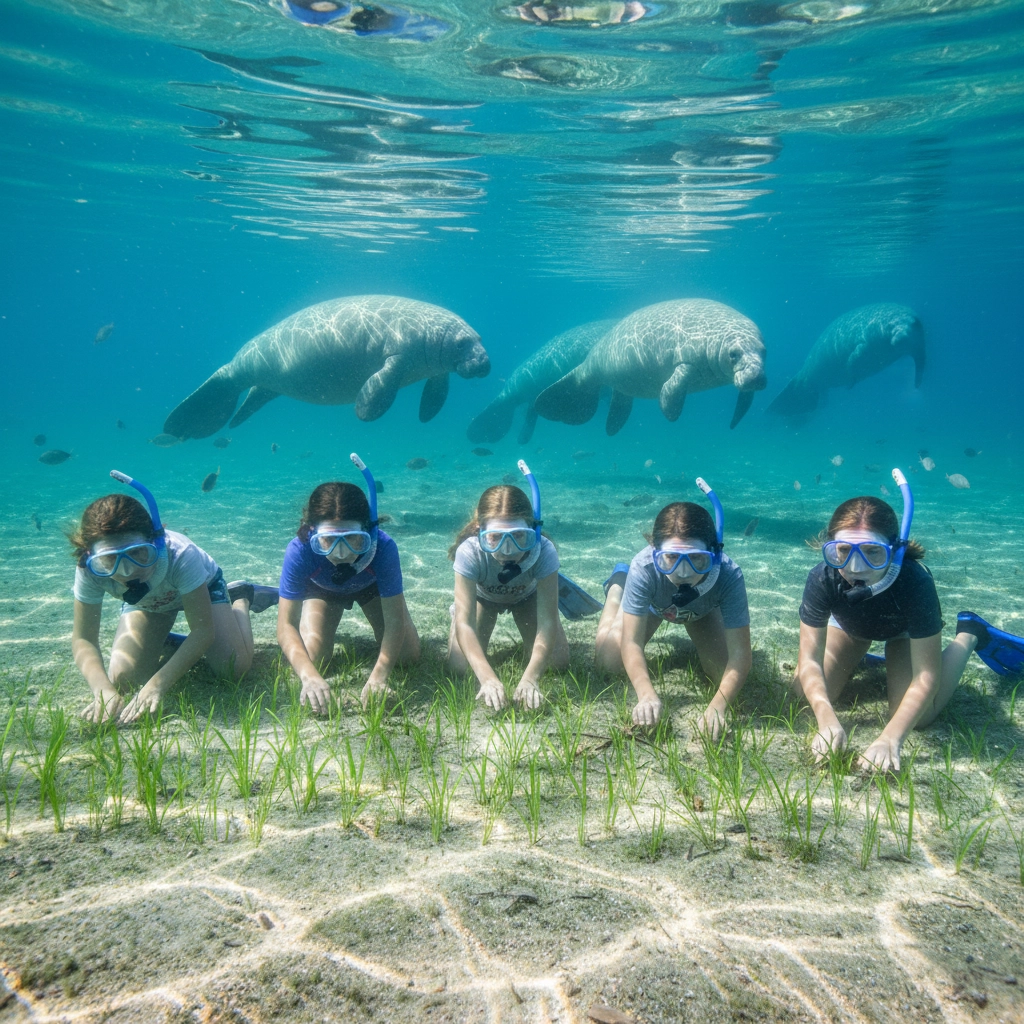
Hands-On Habitat Restoration Projects
Eelgrass Restoration Initiatives
Students participating in Crystal River expeditions engage directly in eelgrass restoration projects that provide essential food sources for manatees. These underwater meadows serve as critical feeding grounds, and student involvement in planting and monitoring eelgrass beds creates measurable conservation impact.
Implement the following structured approach to maximize educational value:
Pre-arrival preparation: Research eelgrass biology, manatee feeding behaviors, and ecosystem interconnections
Field identification training: Learn to distinguish healthy eelgrass from damaged or diseased specimens
Restoration techniques: Master proper planting methods, spacing requirements, and monitoring protocols
Impact assessment: Document restoration progress through photographic evidence and growth measurements
Students from Crystal River Primary School have demonstrated exceptional success in eelgrass restoration at Hunter Springs Park, working alongside conservation professionals to restore degraded habitat areas. Encourage students to maintain detailed field journals documenting their observations and contributions to habitat improvement efforts.
Responsible Anchoring Education
Address the significant threat posed by improper boat anchoring practices through student-led education initiatives. Students learn firsthand about the damaging effects of certain anchors on eelgrass beds, then develop educational materials for boating communities.
Create comprehensive anchoring awareness programs by:
Documenting anchor damage through underwater surveys and photographic evidence
Developing educational signage for marinas and boat ramps throughout the Crystal River area
Presenting findings to local boating organizations and marine patrol units
Establishing monitoring protocols for ongoing assessment of restoration site protection
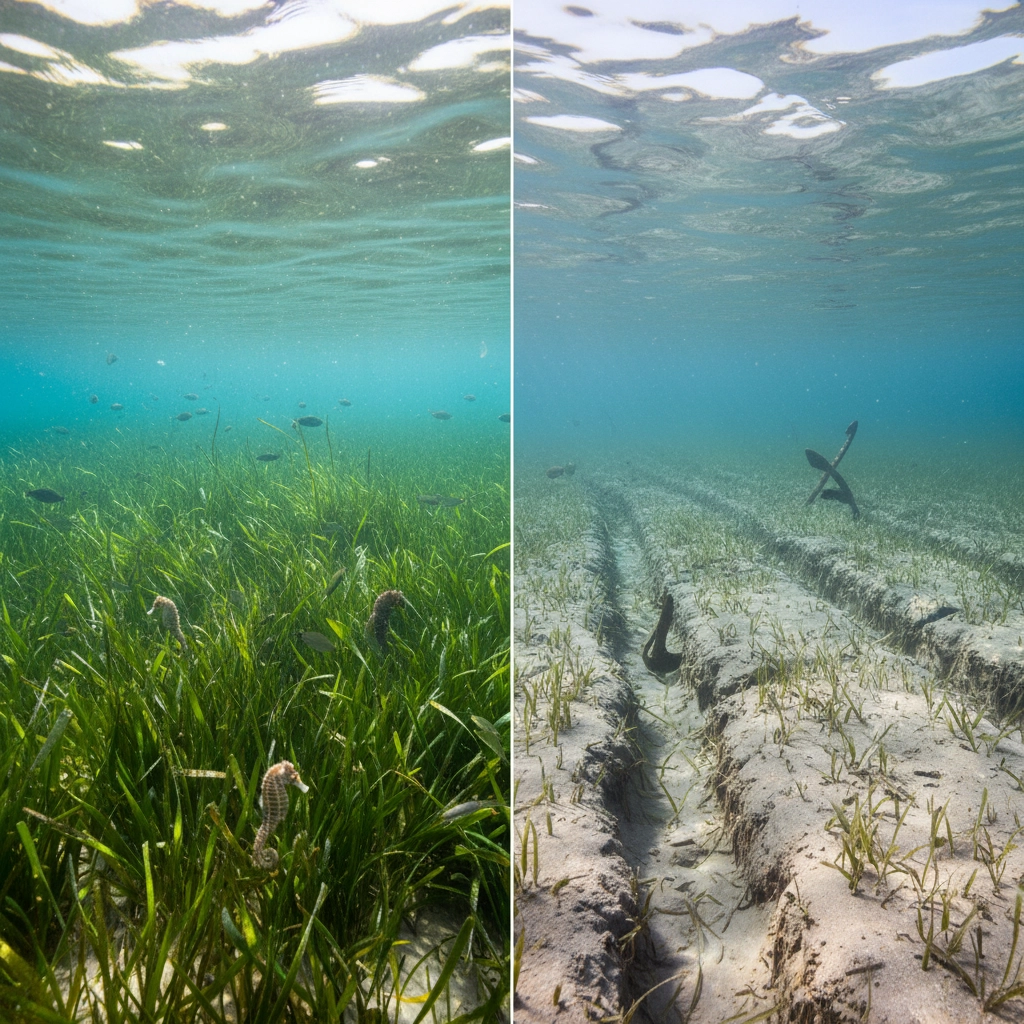
Direct Marine Research Participation
Citizen Science Data Collection
Transform students into valuable contributors to ongoing manatee research through structured citizen science programs. These initiatives provide researchers with essential data while offering students authentic scientific experiences that reinforce classroom learning objectives.
Organize data collection activities around these core research areas:
Population monitoring: Conduct systematic manatee counts during guided observation sessions
Behavioral documentation: Record feeding patterns, social interactions, and habitat preferences
Environmental assessment: Monitor water temperature, vegetation density, and human activity levels
Scar pattern identification: Assist researchers in individual manatee identification efforts
Ensure that all student research activities follow established protocols and contribute to legitimate scientific databases maintained by conservation organizations.
Guided Observation Experiences
Structure supervised water experiences that allow students to observe manatees in their natural environment while maintaining appropriate wildlife interaction guidelines. Fifth-grade students participating in guided swims at Kings Bay develop profound personal connections to the animals they work to protect.
Establish clear safety and educational protocols:
Professional supervision: Maintain appropriate guide-to-student ratios for all water activities
Wildlife interaction guidelines: Emphasize passive observation and respectful distance maintenance
Educational integration: Connect direct observations to broader conservation concepts and scientific principles
Documentation requirements: Encourage detailed observation recording and reflection activities
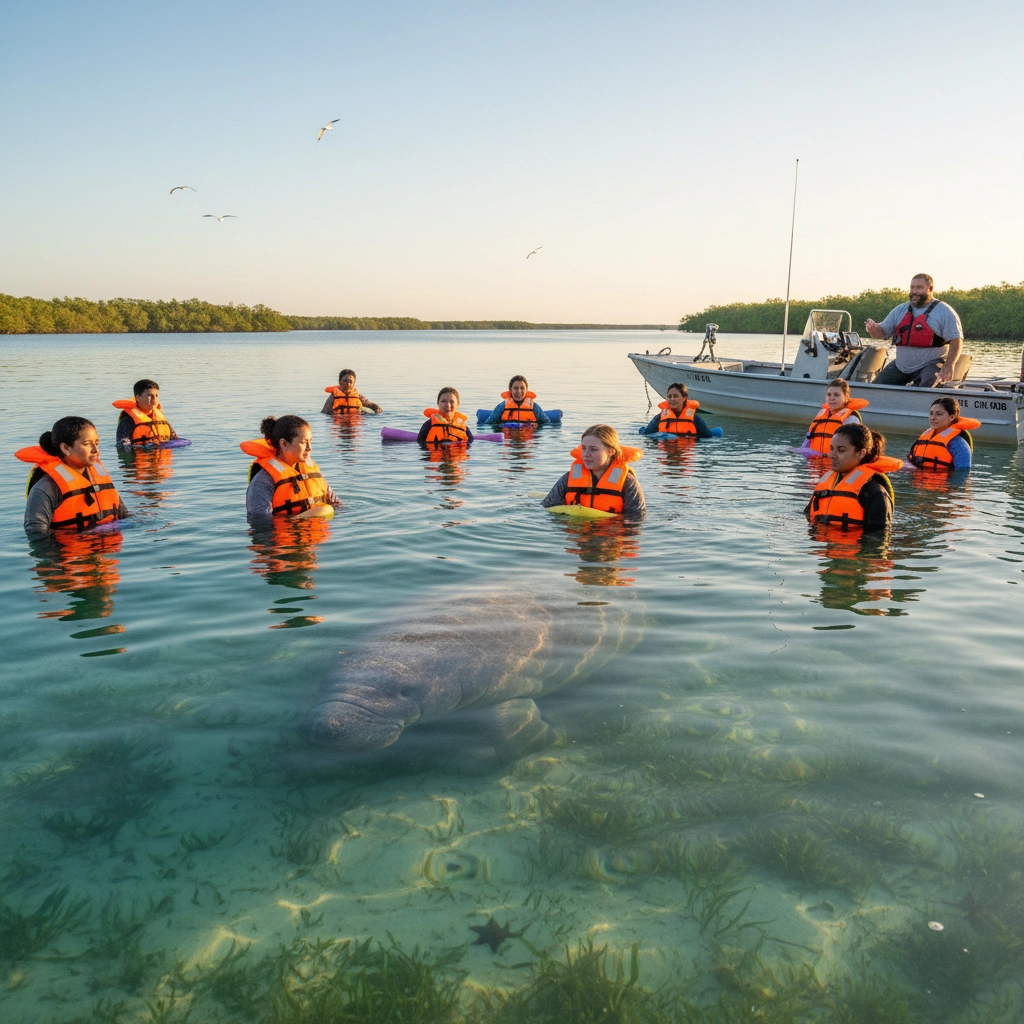
Community Education and Outreach
Peer-to-Peer Conservation Messaging
Develop student capacity for conservation education through structured outreach programs that extend learning impact beyond immediate expedition participants. Students become conservation ambassadors, sharing knowledge and inspiring action within their home communities.
Create effective outreach programs through:
Presentation development: Train students to create compelling conservation presentations using expedition experiences and research findings
Social media campaigns: Guide students in developing age-appropriate digital content that raises manatee conservation awareness
School program expansion: Encourage students to establish conservation clubs and ongoing fundraising initiatives
Community partnership building: Connect students with local environmental organizations for sustained involvement opportunities
Educational Material Creation
Channel student creativity into developing educational resources that support broader conservation efforts throughout Florida's marine ecosystems. Students create lasting contributions to conservation education while reinforcing their own learning experiences.
Guide students in producing:
Informational brochures highlighting manatee conservation needs and protection strategies
Interactive displays for visitor centers and educational institutions throughout the Crystal River region
Digital storytelling projects documenting expedition experiences and conservation outcomes
Educational game development that teaches younger students about marine ecosystem protection
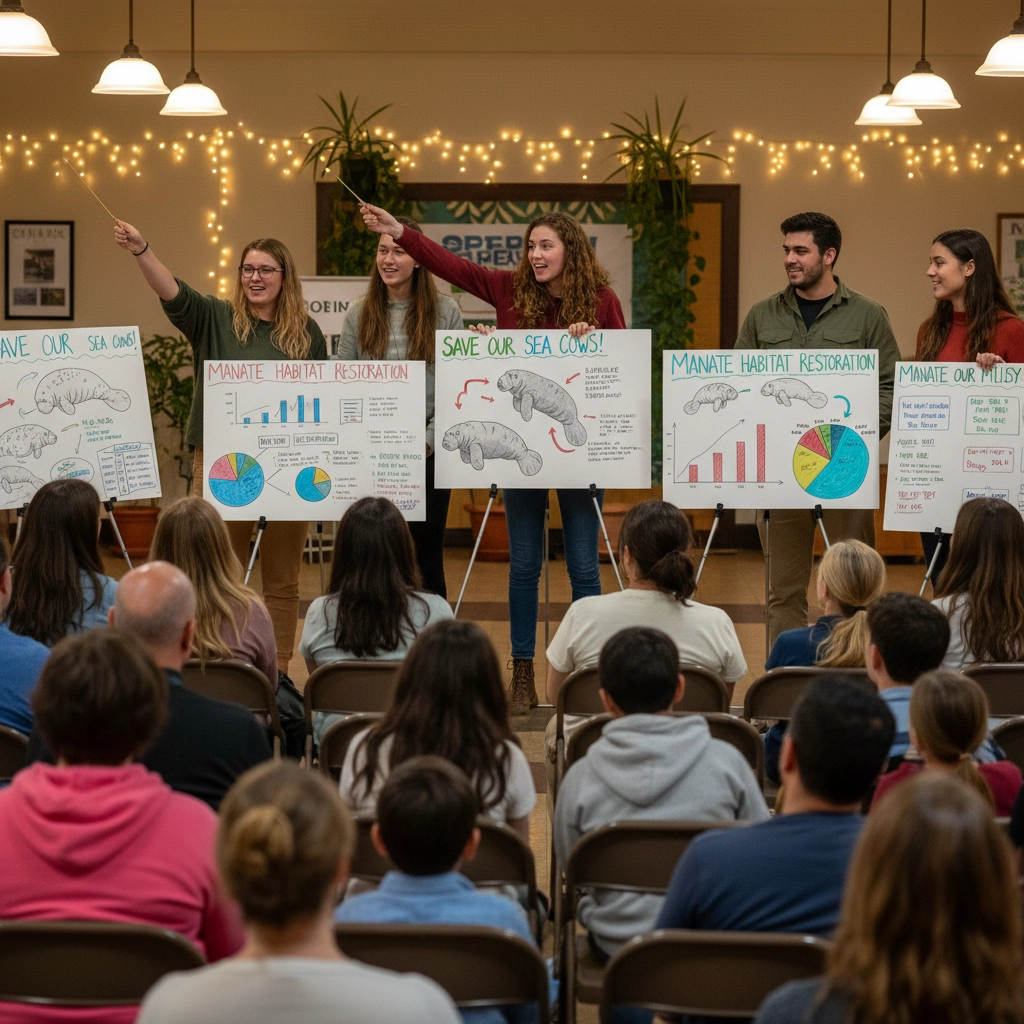
Long-Term Impact and Stewardship Development
Building Future Conservation Leaders
Service learning expeditions in Crystal River create transformational experiences that influence career choices and lifelong environmental commitment. Students who participate in hands-on conservation work demonstrate significantly higher rates of environmental science pursuit and sustained conservation involvement.
Foster long-term engagement through:
Alumni network development: Maintain connections with expedition participants to track conservation involvement and career development
Advanced opportunity provision: Offer returning students leadership roles and advanced research participation options
Mentorship program establishment: Connect experienced student participants with newcomers for peer learning and support
Career pathway exploration: Introduce students to marine biology, environmental law, conservation policy, and related professional opportunities
Measuring Conservation Impact
Document the tangible conservation outcomes achieved through student service learning participation to demonstrate program effectiveness and secure ongoing support for expansion efforts.
Track meaningful metrics including:
Habitat restoration progress: Monitor eelgrass bed recovery rates and manatee usage patterns in restored areas
Community education reach: Document presentation audiences, social media engagement, and conservation message amplification
Student behavior change: Survey participants regarding continued conservation involvement and environmental advocacy
Research contribution value: Quantify student data collection contributions to ongoing scientific research projects
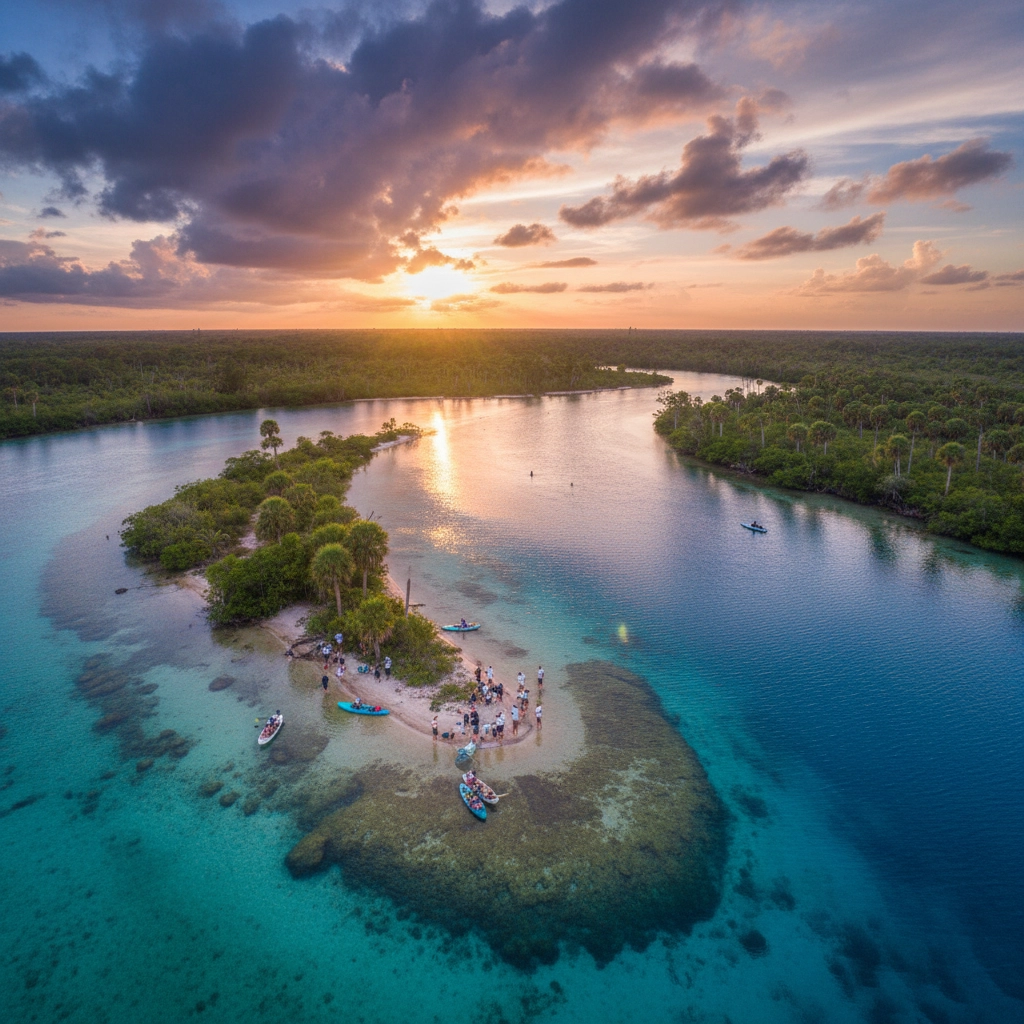
Implementing Successful Service Learning Programs
Essential Program Components
Ensure comprehensive service learning experiences through careful attention to educational structure, safety protocols, and meaningful contribution opportunities. Successful programs integrate academic learning with authentic conservation work while maintaining appropriate supervision and support.
Establish program foundations through:
Clear learning objectives: Define specific educational outcomes and conservation goals for each expedition component
Professional partnerships: Collaborate with established conservation organizations, research institutions, and marine science professionals
Safety protocol development: Create comprehensive risk management procedures for all water-based and field research activities
Assessment strategy implementation: Develop methods for evaluating both educational achievement and conservation impact
Preparation and Follow-Up Requirements
Maximize expedition impact through thorough preparation and structured follow-up activities that reinforce learning and extend conservation engagement beyond the immediate travel experience.
Implement comprehensive preparation through:
Background research assignments: Require students to investigate manatee biology, habitat requirements, and conservation challenges
Skill development sessions: Provide training in research methods, data collection techniques, and wildlife observation protocols
Equipment familiarization: Ensure student comfort with scientific instruments, safety gear, and documentation tools
Expectation clarification: Establish clear behavioral guidelines for wildlife interactions and research participation
Service learning expeditions to Crystal River represent powerful opportunities for students to contribute meaningfully to manatee conservation while developing essential scientific skills and environmental awareness. Through careful program design and implementation, educators can create transformational experiences that inspire lifelong commitment to marine conservation and environmental stewardship.



Comments